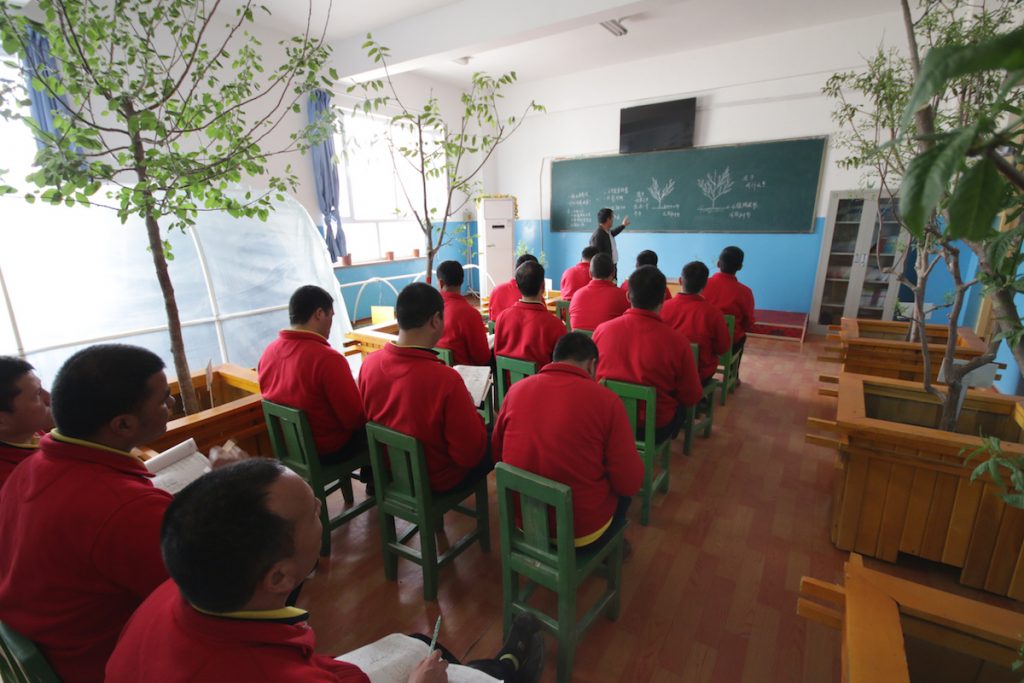China has been expanding its network of “re-education” camps in the Xinjiang region where over a million people are allegedly detained and subjected to human rights abuses, a new study revealed.
The Australian Strategic Policy Institute (ASPI) released on Sept. 24 a report showing nearly 400 internment camps, with dozens newly built or expanded since 2017, in the region.
The findings undercut Beijing’s claims that its re-education system has been winding down and most of the people in the Xinjiang camps have “returned to society.”
ASPI researchers have identified and mapped more than 380 suspected detention facilities in Xinjiang with at least 61 detention sites that have been constructed or expanded between July 2019 and July 2020.
According to the latest satellite imagery, ASPI said there are at least 14 new facilities, which are mostly prisons, that are still under construction this year.
“Of these, about 50 percent are higher security facilities, which may suggest a shift in usage from the lower-security, ‘re-education centers’ toward higher-security prison-style facilities,” the report read.
This includes a brand new facility built next to a vocational and technical school in Kashgar that was, until April 2020, funded by the World Bank, according to ASPI.
The facility, which is surrounded by a 14-meter high perimeter wall, with 10-meter watchtowers built on top of the wall at regular intervals, opened on Jan. 26, 2020.
The newly constructed facility can accommodate more than 10,000 people.
ASPI said it believed that the findings of the new study show and covers “the largest database of Xinjiang’s detention facilities in existence.”
Satellite data also indicated that “at least 70 facilities appear to have been de-securitized by the removal of internal fencing or perimeter walls.”
“This includes eight camps that show signs of decommissioning, and it is possible they have been closed. [About] 90 percent of de-securitized camps are lower-security facilities,” the report added.

ASPI stressed that these findings “suggest that many extrajudicial detainees in Xinjiang’s vast ‘re-education’ network are now being formally charged and locked up in higher security facilities.”
Researchers at the institute used a number of research methods “to verify” camps mentioned in survivors’ accounts, media reports, and leaked government documents.
ASPI systematically collected, search, and compared satellite imagery.
“One of the most effective methods was the examination of night-time satellite imagery from Xinjiang. Because the vast majority of the camps that we located were built on previously unused land,” the report read.
“It was possible to compare illuminated areas in the first few months of 2017 — before most of those camps had been constructed — with presently illuminated areas,” it added.
Daytime satellite imagery gave the researchers “much greater detail.”
Most of the camps were erected near industrial parks, which backed the claims of the survivors that inmates at many internment camps have been subjected to forced labor.
“Camps are also often co-located with factory complexes, which can suggest the nature of a facility and highlight the direct pipeline between arbitrary detention in Xinjiang and forced labor,” the report said.
In July 2019, a Chinese senior official claimed that most of the people sent to internment camps in the Xinjiang region have returned to society.
Beijing said the camps were vocational training centers to help alleviate poverty and prevent the rise of religious extremism.
However, Beijing has not allowed the media or human rights organizations to visit the camps in Xinjiang since it began its crackdown targeting Muslim Uyghurs and other minorities in 2017.
“The Uyghurs, who are the largest indigenous ethnic population of the region, have seen their places of worship destroyed and their movements and behavior closely monitored and controlled—even in their own homes,” the report said.






